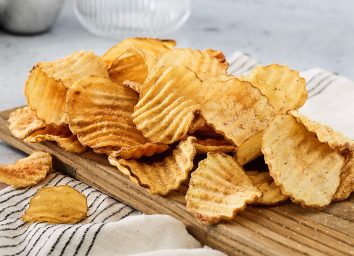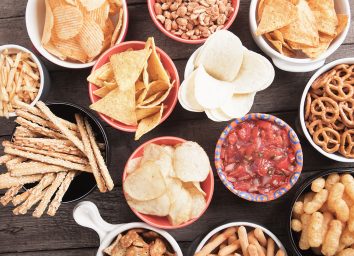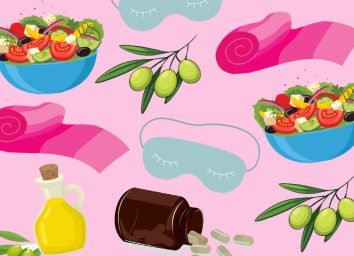26 Best & Worst Foods for Acid Reflux

When it comes to exercise, “feeling the burn” is a good thing. When it comes to your esophagus, not so much. Acid reflux, also known as gastroesophageal reflux disease, is a common condition that causes acid to splash from the stomach into the esophagus. The result: telltale symptoms of chest pain, shortness of breath, sour burps, and a burning sensation in the chest and throat. If you experience GERD, you’re in good company—it’s estimated that 20% of the U.S. population lives with this condition.
Since GERD is a problem of excess acid in the stomach, it only makes sense that the foods we put in our bellies can improve or worsen symptoms. Some foods have properties that make them more likely to stir up acid production, while others can help keep acid at optimal levels.
Want to eat right to tame the reflux fire? We’re sharing the 26 best and worst foods for acid reflux.
13 Foods That Cause Acid Reflux
Fried Foods
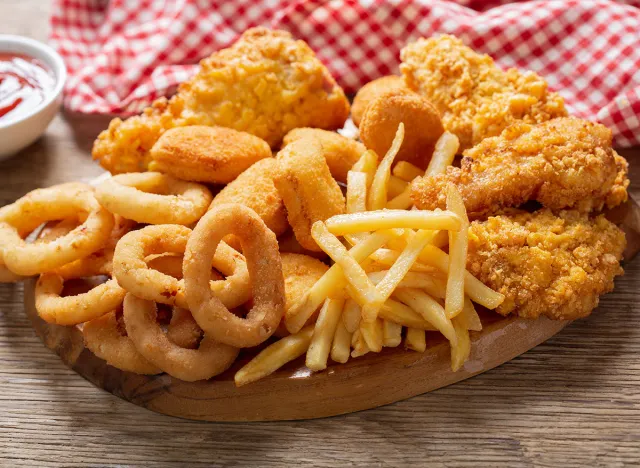
Are fried foods tasty? You bet. Do they contribute to acid production? Yes again. Because they’re laden with fats, fried foods take a long time to digest, meaning the stomach has to use lots of acids to break them down.
Plus, high-fat foods cause the body to release bile salts and a hormone called cholecystokinin, which relaxes the lower esophageal sphincter, or LES, letting more acid wash up into the esophagus. For less reflux, steer clear of fried options like fried chicken, french fries, and mozzarella sticks.
Citrus Fruits
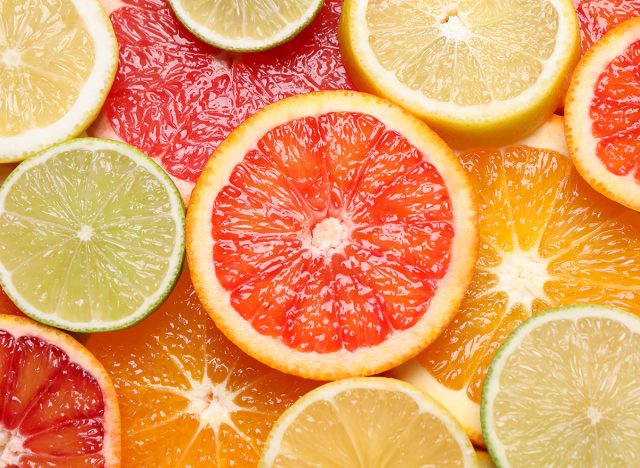
Loaded with potassium, vitamin C, and fiber, citrus fruits are great for overall health. For GERD, though, the sunny fruits can spell trouble. They’re highly acidic, prompting the stomach to create excess acid. Try removing lemons, limes, oranges, and grapefruit during a reflux flare.
Chocolate
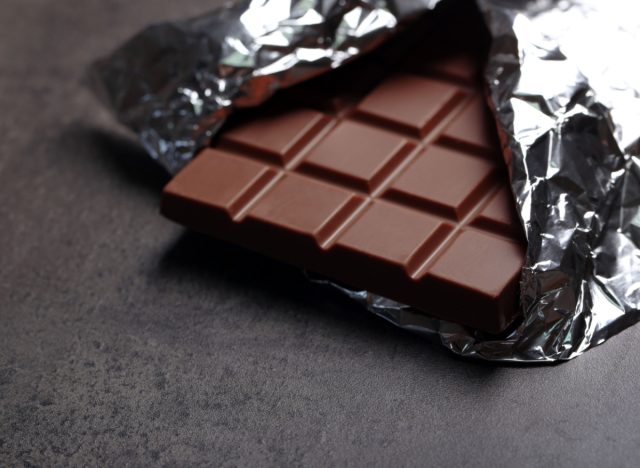
It’s a bit of a bummer, but this favorite sweet treat is a reflux trigger for many people. It’s not that chocolate is acidic. Instead, it contains methylxanthine, a compound that can decrease pressure in the LES. Once again, relaxing this lower portion of the esophagus means acid has more leeway to wash upwards.
Carbonated Beverages
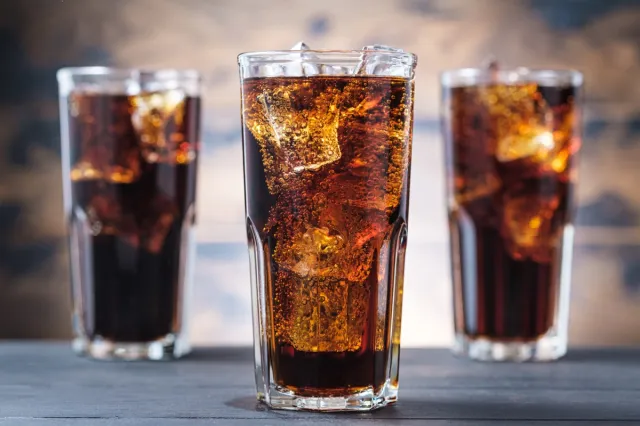
We’ve all had a case of the burps from drinking carbonated beverages like soda or sparkling water. But if you have GERD, bubbly drinks could do more than cause some embarrassing air escapes. Their carbonation leads to bloating, which distends the stomach and puts pressure on the LES. More pressure can equal more acid leakage.
Coffee

Et tu, coffee? Yep, while the high caffeine content of java may perk you up, it’s also its downfall in terms of acid production. The National Institute of Diabetes and Digestive and Kidney Disorders recommends people with GERD avoid coffee and other sources of caffeine. Fortunately, this doesn’t mean you must give up your brew entirely. Try switching to decaf.
Alcohol
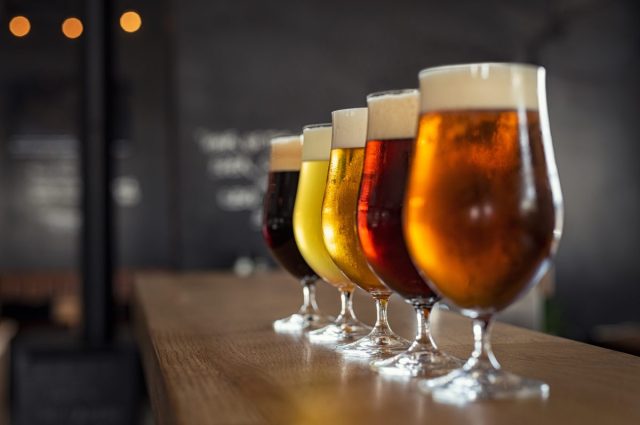
Alcohol is another trigger drink for many folks with GERD since it can also relax the lower esophageal sphincter. Consider limiting your booze intake, opting for mocktails or nonalcoholic beer and wine.
Spicy Foods
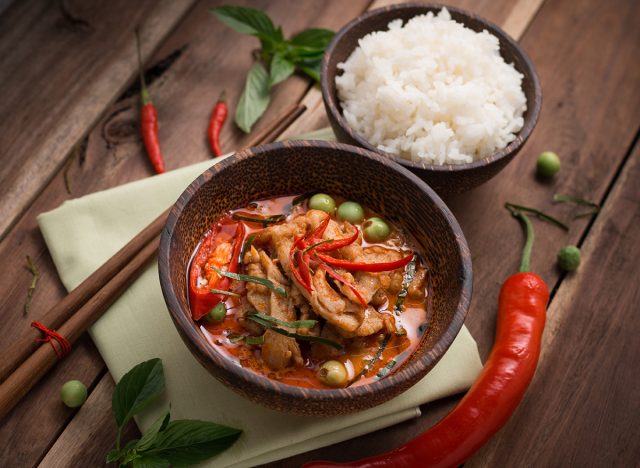
Whether it’s chilies, curries, or salsa, spicy foods are probably the most well-known reflux triggers. In fact, according to a 2020 study, spicy items were the most common triggering food in a survey of 100 GERD patients, with 62% citing them as their top trigger. If reflux is a problem, limit the spice and experiment with more neutral flavorings like fresh herbs.
Ultra-Processed Snacks
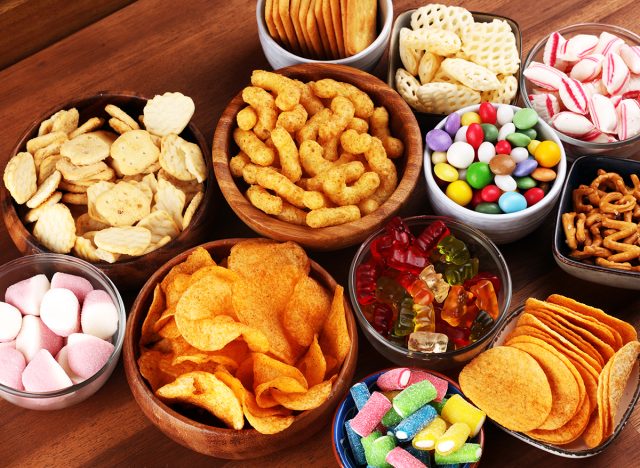
Lately, science has uncovered multiple drawbacks of ultra-processed foods—the kind that includes lots of additives, sweeteners, and artificial colors. (Think: packaged snacks you’d see at a convenience store.) Though no studies directly link these foods to reflux, research has found that diets high in fat, salt, and spice (three elements you’ll often find in ultra-processed snacks) are associated with an increased risk of GERD.
Tomatoes
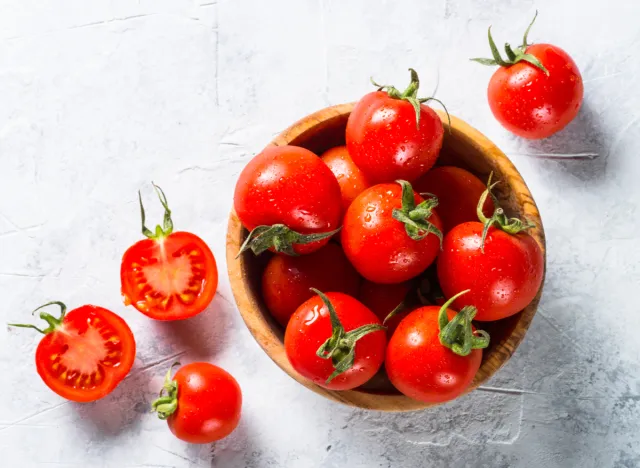
Alas, another healthy food that can worsen acid production. The malic and citric acids in tomatoes prompt the stomach to produce more acid, increasing the likelihood of reflux. Besides fresh tomatoes, tomato-based foods like ketchup, canned tomatoes, and spaghetti sauce can all wreak havoc on GERD symptoms.
Peppermint Tea
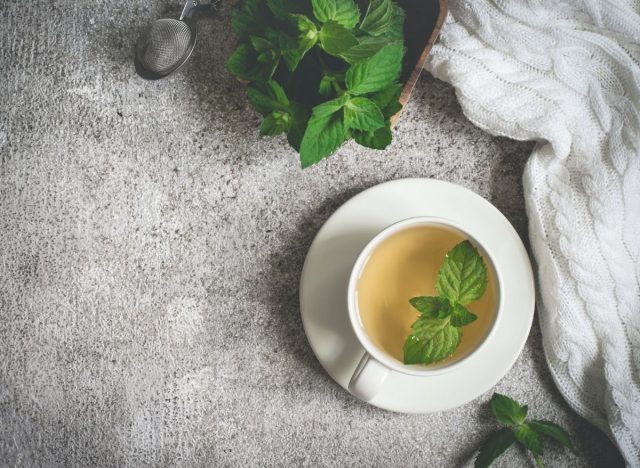
Peppermint tea is known as an after-meal digestif since it contains compounds that help relax the gut. But in this case, it may do so a little too well. Peppermint tea can aggravate acid reflux since it can soothe the LES into a relaxed state that allows acid to enter the esophagus. Try chamomile or ginger tea instead if you’d like something warm to settle your stomach after meals.
Juice
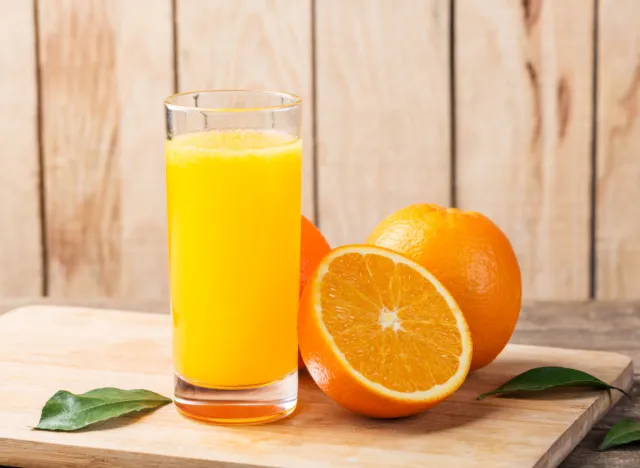
Just like citrus fruits and tomatoes are likely to pique your acid production, their juices do so, too. The juiced versions of these fruits retain the same GERD-promoting properties as in their whole form. Acidic OJ, tomato juice, or grapefruit juice could start your day on a sour note.
Fatty Meats
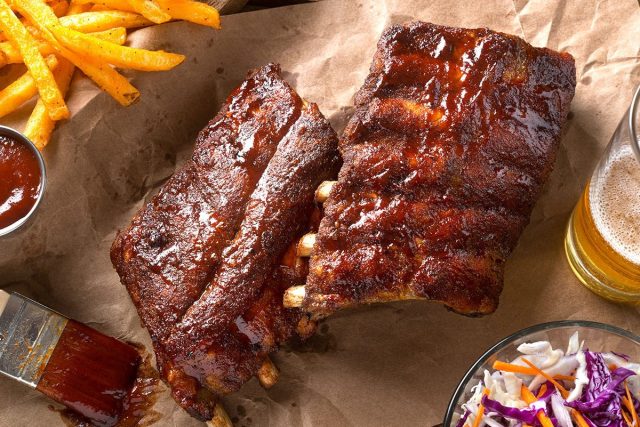
Anything high in fat takes its sweet time to digest, causing your digestive system to work harder and produce more acid. That includes fatty meats like ribs, chicken with skin, or beef with lots of marbling. Removing visible fat from meat before cooking—or simply opting for leaner cuts like skinless chicken, turkey breast, or top sirloin—can reduce potential discomfort.
Pizza
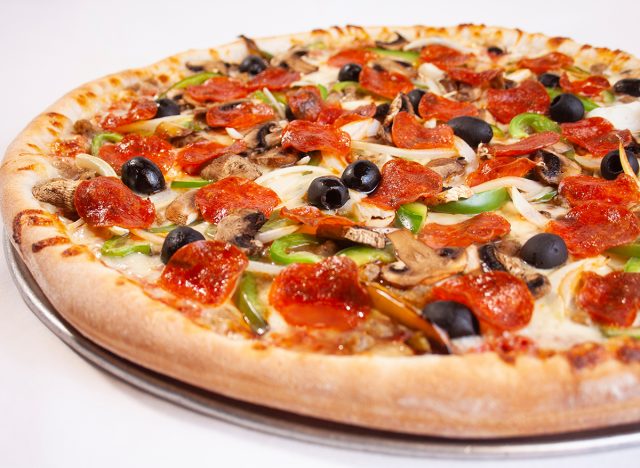
Delicious as it may be, pizza can be a triple threat for GERD with its acidic tomato sauce, fatty meat toppings, and salty crust. Rather than ordering a pie from a chain, build a more acid-friendly pizza at home with a low-sodium crust, white sauce or olive oil, and lean protein toppings.
Best Foods for Acid Reflux
Ginger
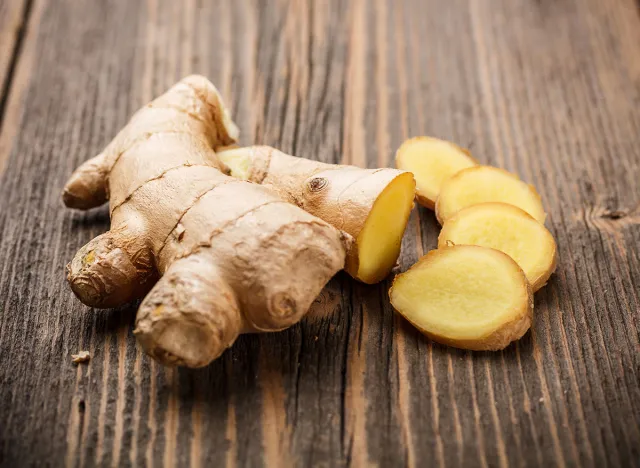
Ginger is an anti-inflammatory all-star that you may know for its effectiveness in easing nausea. Though studies have yet to prove that ginger has anti-acid properties, some people also use it as a tonic for reflux.
Its anti-inflammatory nature could help quell excess acid production. A 2023 study found that four weeks of ginger supplementation significantly reduced stomach pain, burning, and heartburn in 51 subjects.
Oatmeal
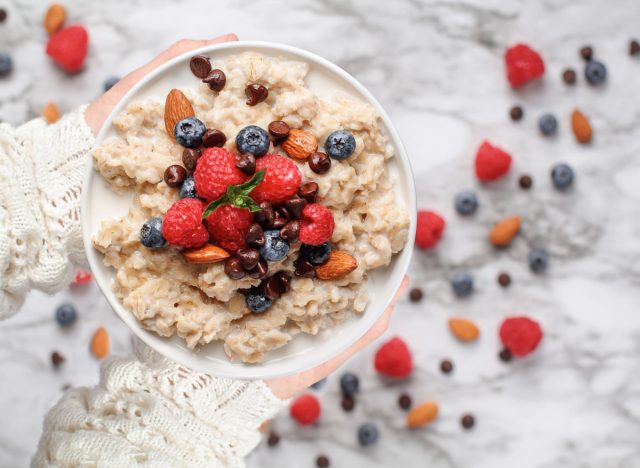
Whole grains like oatmeal are another excellent choice for stamping out the fires of inflammation. Oats can absorb stomach acid, reducing the amount available to splash up into the esophagus. And since they’re high in fiber, which makes you feel full, they can keep you from overeating—a common trigger for heartburn.
Lentils
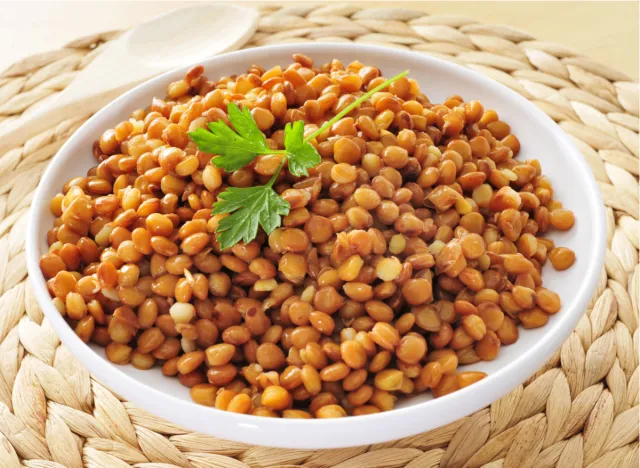
Research shows that a high-fiber diet can reduce gastroesophageal reflux, decreasing the frequency of heartburn. Try turning to lentils for a heaping helping of fiber (not to mention plenty of plant-based protein). One cup of cooked lentils has more than 15 grams of fiber—60% of the daily target for women and 39% for men.
Watermelon
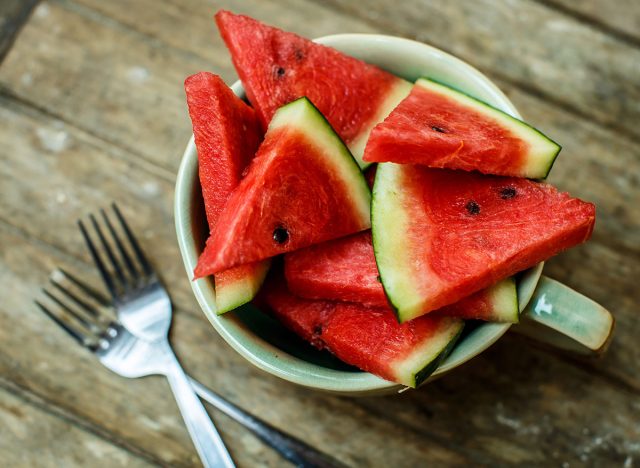
All the H2O in watermelon is super hydrating. That’s a good thing not only for your overall wellness but for your acid balance, too. Foods with water help dilute stomach acid, minimizing reflux. Meanwhile, watermelon carries plenty of antioxidants like lycopene, carotenoids, and vitamin C to put systemic inflammation in its place.
Cantaloupe
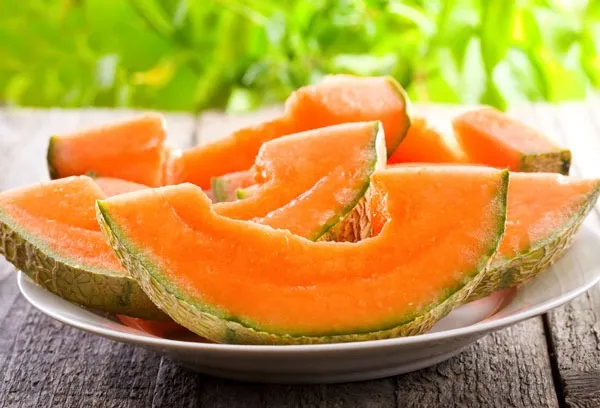
Much like watermelon, cantaloupe is made up mostly of fluid. Each fruit is 90% water! Make a cantaloupe smoothie, parfait, or fruit salad, and let this hydrating snack do its calming work on your stomach acid.
Raw Spinach
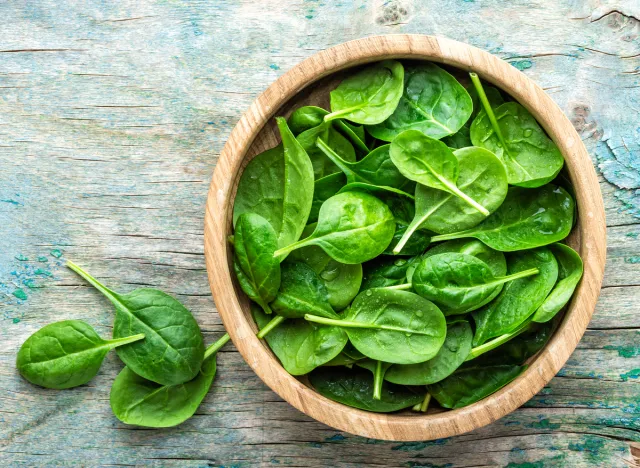
Where can you find both fiber and fluid? In leafy greens, of course! Raw spinach is a wellspring of both these components—and since it is an alkaline food, it won’t spike the acid in your belly.
Kale
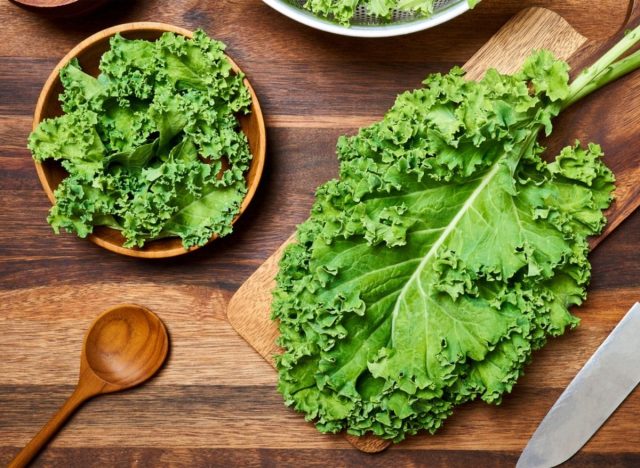
We couldn’t tout spinach without mentioning its leafy green cousin, kale. Besides immune and skin-supporting vitamins A and C, bone-supporting vitamin K, and health-protective antioxidants, kale rivals spinach for fiber and fluids. It’s far more likely to calm reflux than stoke its fires.
Avocado
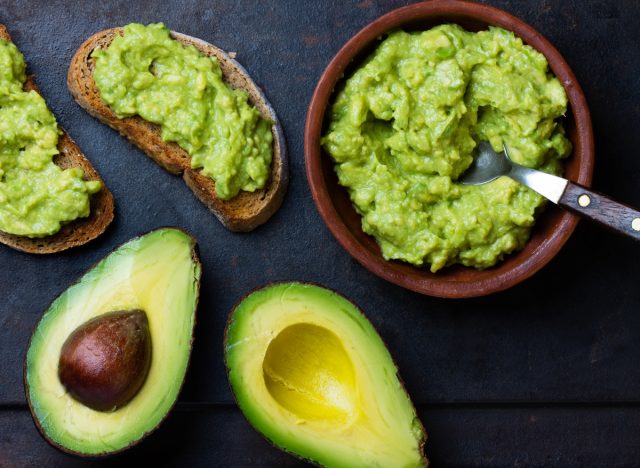
To fight heartburn, Harvard Health suggests replacing saturated fats with unsaturated ones, like the kind you’ll find in avocados. These creamy fruits are high in healthy monounsaturated fats and might help dial down inflammation. And they’re some of the most versatile foods around! Try avocado on sandwiches, in salads, or as a creamy addition to baked goods.
Celery
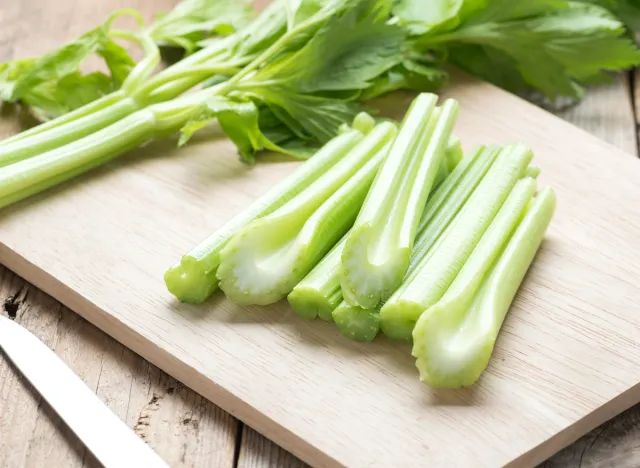
If you had to pick a hydrating vegetable, we bet you’d name celery. This crunchy veggie’s ample water content and non-acidic nature make it ideal for eating with GERD. Keep some cut-up celery in your fridge for easy-access snacks and meal prep.
Whole Wheat Bread
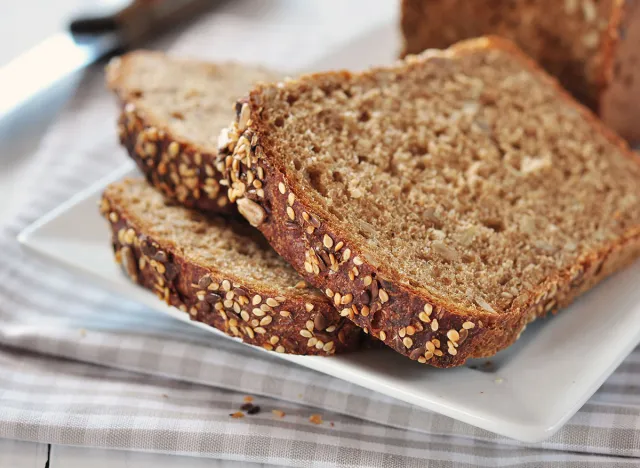
For reflux, a piece of whole wheat toast might be the best thing since, well, sliced bread. The whole grains in this sandwich staple contain fiber that can mitigate symptoms. A recent study found that dietary fiber might be one key to decreasing heartburn.
Sweet Potatoes
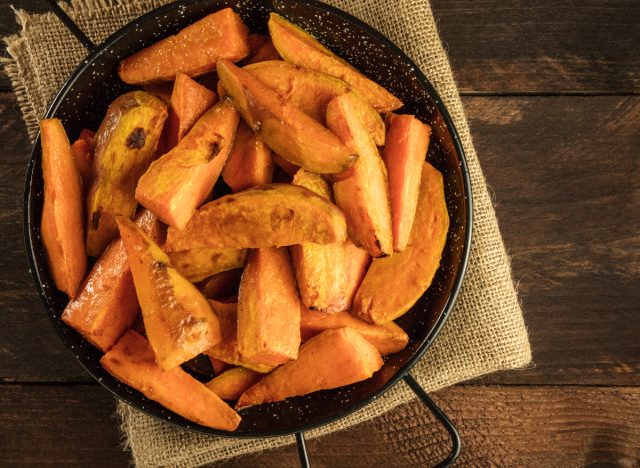
Root vegetables are another food sure to fill your fiber tank. A cup of mashed sweet potato boasts more than 8 grams of fiber—so it’s not surprising that Johns Hopkins Medicine recommends them as one of the top reflux-fighting foods.
Broccoli
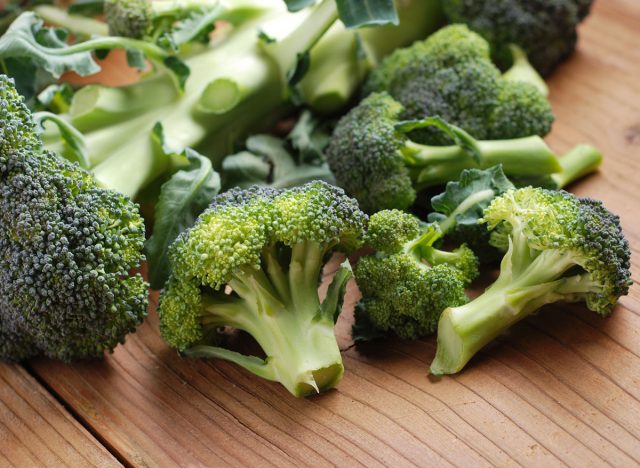
Broccoli has a lot to offer for digestion in general, but since we’re focusing on reflux, check this out: Besides being high in fiber and water, broccoli is an alkaline veggie that won’t prompt an uptick in acid. Since certain compounds in this leafy green can cause gas, it might not be the best choice for everyone with GERD.
Fermented Foods
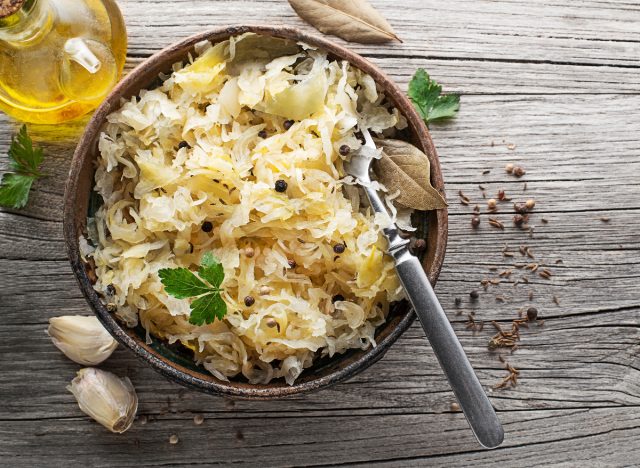
Could optimal gut bacteria be the path to less acidic upset? It’s certainly possible! A 2023 study found that the health of the microbiome might impact esophageal conditions like GERD. Eating more fermented foods is an excellent way to tend to the health of your biome. Try working in some sauerkraut, yogurt, pickles, or kimchi regularly.
- Source: Newberry, C., & Lynch, K. (2019). The role of diet in the development and management of gastroesophageal reflux disease: why we feel the burn. Journal of thoracic disease, 11(Suppl 12), S1594–S1601. https://doi.org/10.21037/jtd.2019.06.42
- Source: Tosetti, C., Savarino, E., Benedetto, E., De Bastiani, R., Belvedere, A., Cottone, C., Gambaro, P., Mancuso, M., Pirrotta, E., Scoglio, R., Ubaldi, E., & Zamparella, M. (2020). Elimination of dietary triggers is successful in treating symptoms of gastroesophageal reflux disease. Digestive Diseases and Sciences, 66(5), 1565–1571. https://doi.org/10.1007/s10620-020-06414-z
- Source: Heidarzadeh-Esfahani, N., Soleimani, D., Hajiahmadi, S., Moradi, S., Heidarzadeh, N., & Nachvak, S. M. (2021). Dietary Intake in Relation to the Risk of Reflux Disease: A Systematic Review. Preventive nutrition and food science, 26(4), 367–379. https://doi.org/10.3746/pnf.2021.26.4.367
- Source: Aregawi, L. G., Shokrolahi, M., Gebremeskel, T. G., & Zoltan, C. (2023). The Effect of Ginger Supplementation on the Improvement of Dyspeptic Symptoms in Patients With Functional Dyspepsia. Cureus, 15(9), e46061. https://doi.org/10.7759/cureus.46061
- Source: Morozov, S., Isakov, V., & Konovalova, M. (2018). Fiber-enriched diet helps to control symptoms and improves esophageal motility in patients with non-erosive gastroesophageal reflux disease. World journal of gastroenterology, 24(21), 2291–2299. https://doi.org/10.3748/wjg.v24.i21.2291
- Source: Okereke, I., Hamilton, C., Wenholz, A., Jala, V., Giang, T., Reynolds, S., Miller, A., & Pyles, R. (2019). Associations of the microbiome and esophageal disease. Journal of thoracic disease, 11(Suppl 12), S1588–S1593. https://doi.org/10.21037/jtd.2019.05.82

